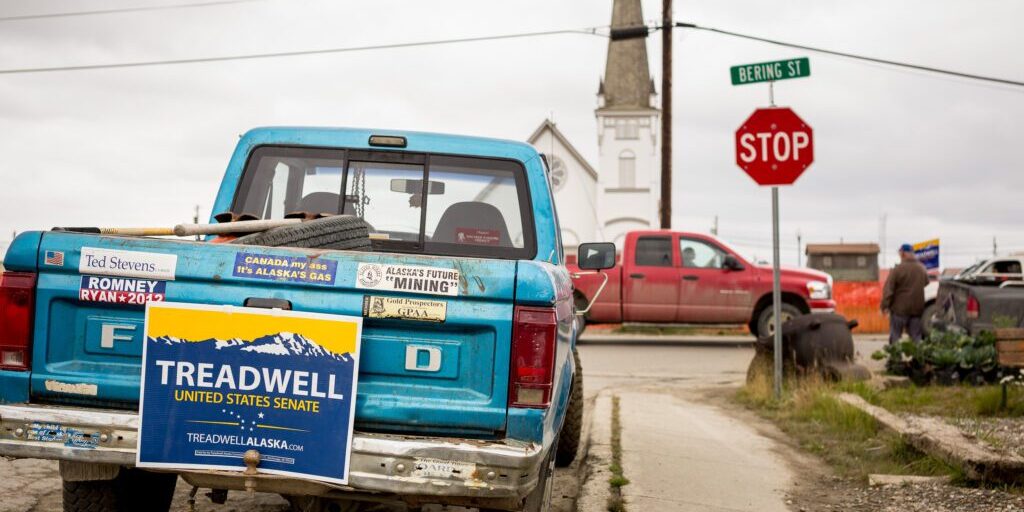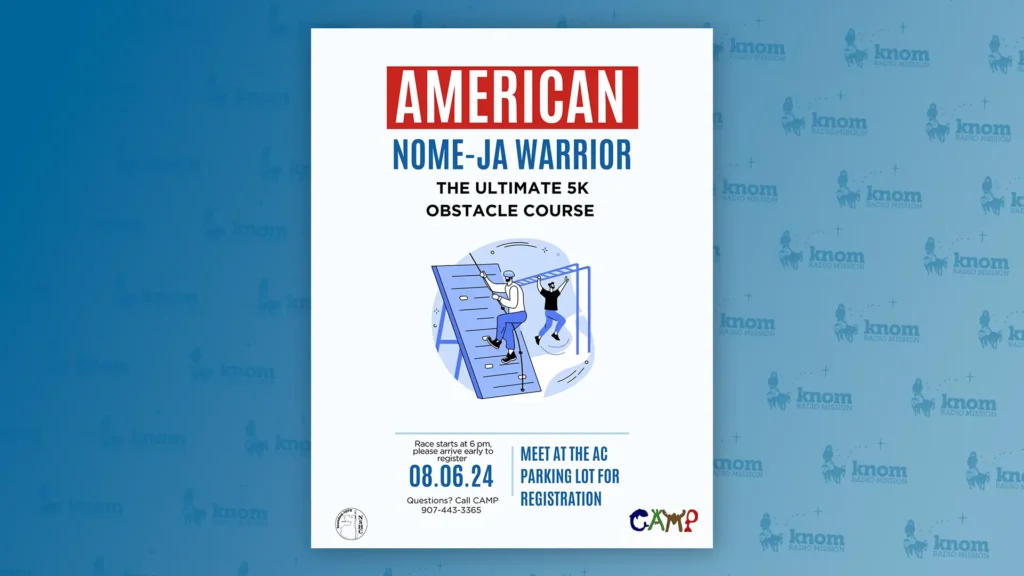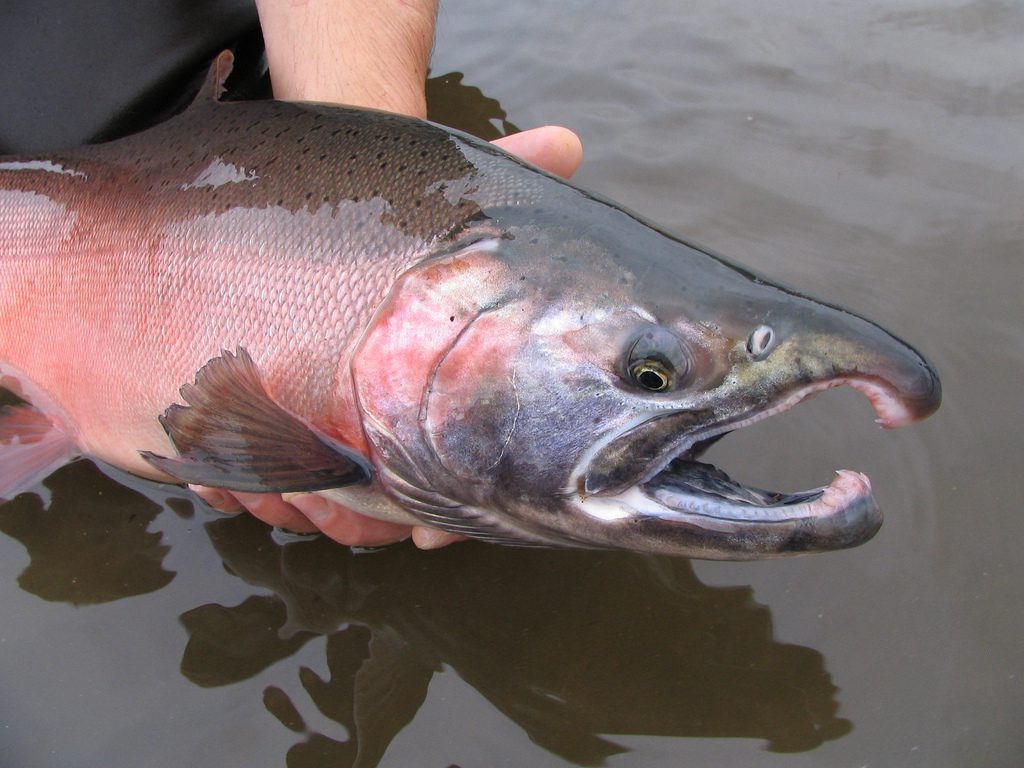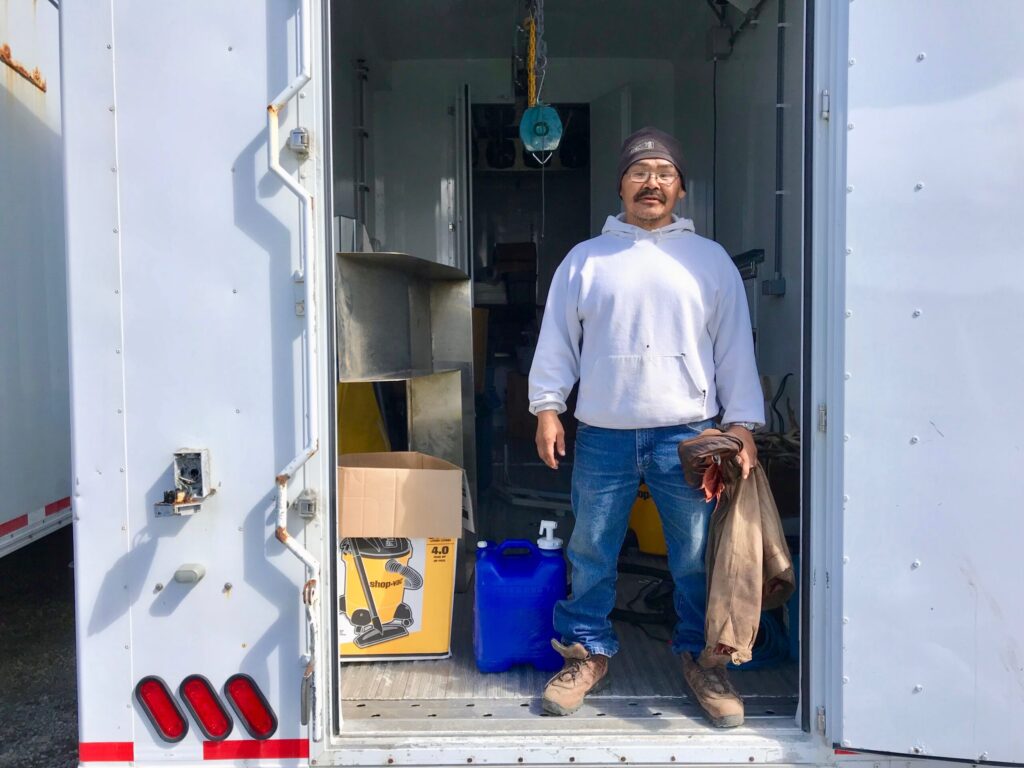Voters throughout the Bering Strait and Norton Sound mostly mirrored statewide trends in Alaska’s primary election Tuesday, showing just slightly more support for the vote to keep Alaska’s current oil tax on the books but otherwise bucking trends in just one race.
Still-unofficial returns Wednesday show the vote “no” on Ballot Measure 1—the vote to keep the state’s new oil tax system, rather than repeal it—has a narrow victory over the “yes” vote. Overall, Alaskans voted 52.2 percent to keep the oil tax system passed by the legislature in 2013, with 47.7 percent voting to repeal, with about 7,000 votes separating the two votes.
The Bering Strait region voted more or less along similar lines, if slightly more in favor of the “no” vote. Regionally, the vote was about 53 percent voting “no” to repeal (1,617 votes), against 46 percent voting “yes” (1,410 votes).
[visualizer id=”11408″]
Bucking regional trends, Nome on the whole voted “yes” for Ballot Measure 1, with more than 66 percent of voters opting for repeal.
[visualizer id=”11410″]
In the Northwest Arctic Borough and along the Arctic North Slope Borough, the vote was even more dramatic: just 36 percent voted “yes” on Ballot Measure 1, with 63 percent voting “no.” In all, 2,728 votes were cast on the ballot measure, of 8,744 registered votes. Overall, turnout was just shy of 32 percent.
The winning “no” vote is not unexpected, after a coalition of six Alaska Native corporations (including the Bering Straits Native Corporation, NANA Development Corporation in the Northwest Arctic Borough, and the Arctic Slope Regional Corporation in the North Slope Borough) launched the “No One on One” initiative in May, urging a “no” vote on Ballot Measure 1.
While Anchorage Mayor Dan Sullivan saw success in the region (as he did statewide) in his bid for lieutenant governor, taking 62 percent of the Republican vote, the Democratic primary for the job was different. Bering Strait voters bucked statewide trends in choosing Mat-Su teacher and political novice Bob Williams over state Senator Hollis French. Williams took 947 votes to French’s 728, giving Williams just under 50 percent of the vote and leaving French with 38 percent. Nome’s Andrew Lee, the libertarian candidate for the office, gathered 12 percent of the region’s votes.
In the Republican primary, western Alaska voters cast ballots along familiar statewide lines: in the three-way runoff for Senate, Dan Sullivan was the clear favorite with 41 percent of the votes, followed distantly by Joe Miller and Mead Treadwell.
Similarly, in the U.S. House, Forrest Dunbar took the lion’s share of primary votes in the region, well over 58 percent. Incumbent Don Young swept with 87 percent of Republican votes in the region, as he pursues a 22nd term in office.
When it comes to the race for governor, Democratic frontrunner Byron Mallot took nearly 73 percent of the region’s votes on the open ballot, while incumbent Sean Parnell, as he did statewide, won an easy nomination for November by carrying more than 75 percent of the vote.
In all, voter turnout for Bering Strait and Norton Sound saw a slight bump over the 2010 primary: Tuesday saw about 30 percent (or roughly 3,164 voters) of the region’s 10,524 registered voters turn out to vote. In all, it was a small bump to the 27 percent during the 2010 primary.
Shaktoolik saw the highest turnout in the region, with 78 of the community’s 154 registered voters casting a ballot, a turnout of about 51 percent. As of Wednesday, the communities of Diomede and St. Mary’s were reporting zero votes cast, but election officials in Nome said those votes were being processed and should be available by Wednesday.
Editor’s Note: A version of this story appeared online that claimed St. Michael was among the communities that did not have official results as of Wednesday morning. The above corrected text reflects changes that Diomede and St. Mary’s were two communities with delayed returns.







